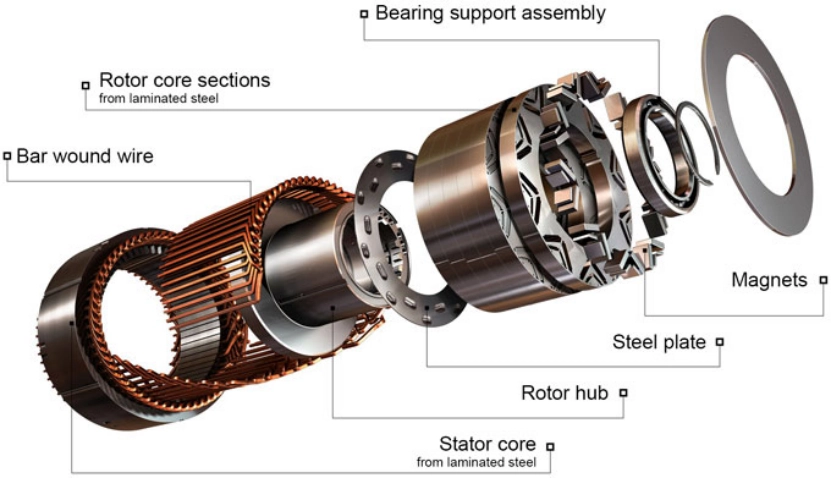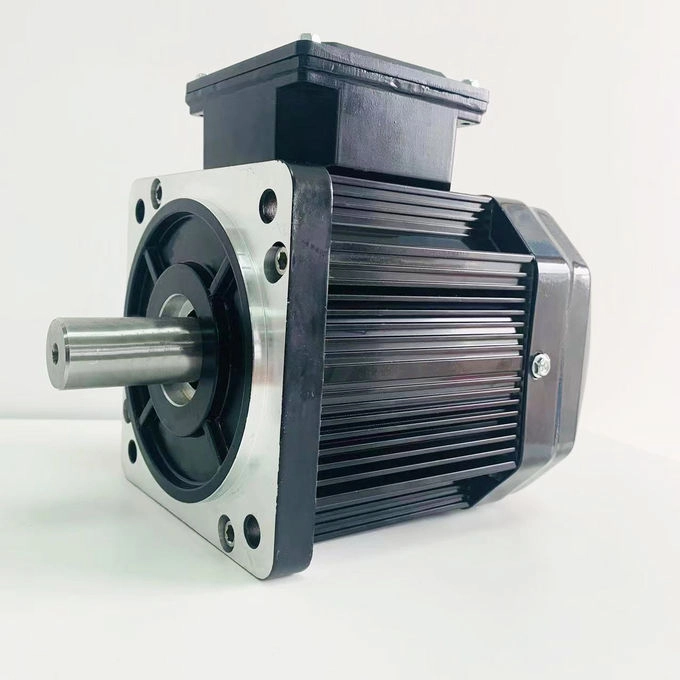Ropeways have grown into a vital method of transport across numerous fields, such as mountain tourism, city travel, and industrial tasks like mining. As the world increasingly prioritizes eco-friendly travel options, ropeway managers face mounting demands to embrace efficient, power-saving approaches. Older drive setups, which depend heavily on intricate gear systems, often consume excessive energy and require constant upkeep. This raises running expenses significantly.

To tackle these issues, permanent magnet synchronous motors (PMSMs) have risen as a transformative solution. Their direct drive feature removes the reliance on gearboxes entirely. Consequently, this leads to notable energy reductions, fewer mechanical setbacks, and boosted overall effectiveness. With stricter environmental rules and climbing energy costs, choosing PMSMs for ropeway uses has become a wise, forward-thinking step for those aiming for lasting sustainability.
Conventional ropeway setups usually employ induction motors paired with gear-lowering systems to produce necessary force. However, these arrangements carry several downsides. Gearboxes create mechanical shortcomings, causing power losses that inflate operational charges. Moreover, the gradual wear of gears calls for regular repairs. This results in interruptions and added costs for managers.
Noise presents another critical concern. Gear-powered ropeway systems generate considerable shaking and sound disturbances. These can annoy people, particularly in city settings or tourist spots. Also, older motors often falter in maintaining steady force. This makes managing changing weights tricky, especially across rugged landscapes or during severe weather.
Direct drive permanent magnet synchronous motors deliver a remarkably effective substitute for gear-reliant setups. By removing the gearbox, these motors greatly cut energy waste. This translates to reduced electricity use and heightened efficiency overall. The straightforward power transfer also lessens wear, prolonging the motor’s life and trimming maintenance demands.
Regarding capability, PMSMs ensure reliable force at slow speeds. This suits ropeway needs perfectly, where steady strength is essential for moving people or goods smoothly. Their brushless structure and fewer components further improve dependability. Plus, they lower noise levels during operation. Hence, they stand out as an excellent pick for both urban and isolated ropeway projects.

Ropeway systems need motors that supply strong force at reduced speeds to guarantee smooth, stable functioning. PMSMs shine here due to their impressive power concentration and outstanding efficiency. Unlike induction motors, which lose efficiency from slip, PMSMs offer exact speed regulation. This ensures top performance despite shifting loads.
Their capacity to produce substantial force directly, without gear reduction, simplifies the drive setup. It also reduces mechanical intricacy. This not only lifts efficiency but also bolsters safety and trustworthiness in ropeway tasks by removing gearbox breakdown risks.
A standout benefit of PMSMs in ropeway uses is their knack for slashing power use. Traditional motors lose energy through heat, friction, and gearbox flaws. Conversely, direct drive PMSMs achieve greater efficiency by curbing these losses. This leads to smaller utility bills and fewer carbon emissions.
Research indicates that adopting PMSMs can boost energy efficiency by 15-20% over standard induction motors. For expansive ropeway activities, these gains can pile up into major savings over time. What’s more, PMSMs demand fewer repair visits. This cuts labor and supply expenses further.
With no gearbox, there are fewer parts to wear out. This reduces upkeep needs noticeably. Older motors require frequent oiling, alignment adjustments, and gear swaps. However, PMSMs run with scant servicing. Their brushless build also skips commutator care, enhancing long-term dependability.
For ropeway operators, this means more active time and fewer surprise repair bills. In tough settings like mountain zones with extreme climates, a low-care, highly reliable motor proves a substantial perk.
In mountain tourism, ropeways must manage sharp slopes and varying passenger numbers. PMSMs supply the vital force to keep speeds steady without straining the system. Their knack for smooth speeding up and slowing down boosts rider comfort. Plus, it ensures safety.
A real example comes from a high-altitude ropeway project. There, PMSMs replaced typical induction motors. The switch cut energy use by 20% and dropped maintenance costs by 30%. This uplifted both efficiency and eco-friendliness.
In urban areas, cable cars are gaining traction as green transport options. Yet, noise pollution and limited space challenge city planners. PMSMs tackle these woes with quiet running and a sleek design. This blends well into crowded cityscapes.
A recent European project upgraded an urban ropeway with direct drive PMSMs. The outcome? Noise dropped significantly, pleasing nearby residents. Efficiency also rose by 25%, supporting the city’s green targets.
In mining, ropeways haul hefty loads across vast distances. Stability and toughness are key in these rough conditions. PMSMs, with their sturdy build and steady force output, ensure seamless running. They avoid risks like gear failures or overheating.
A South American mining case showed how switching to PMSMs boosted transport ability. It also cut downtime from mechanical issues. This shift enhanced productivity and lowered energy use, making operations more budget-friendly.
Every ropeway has distinct needs based on land type, weight limits, and working conditions. PMSMs can be tailored with varied pole numbers, cooling setups, and control methods to maximize performance. By fine-tuning specs, makers can lift efficiency and reliability for specific uses.
Ropeway motors often work in harsh weather, from icy peaks to blazing deserts. High IP-rated casings shield PMSMs from dust, water, and temperature shifts. This ensures lasting performance, even in brutal surroundings.
Modern PMSMs pair with IoT-based tracking tools. These allow real-time checks and predictive upkeep. Sensors monitor motor health, spotting issues before they turn into failures. This forward-thinking method boosts reliability and trims downtime, enhancing operational flow further.
As sectors aim for zero carbon outputs, uptake of efficient tech like PMSMs in ropeways is speeding up. Governments and regulators increasingly back green travel options. This makes PMSMs a smart choice for proactive operators.
Future ropeway tech may feature hybrid drives blending PMSMs with battery storage for better efficiency. Also, regenerative braking lets PMSMs reclaim energy during descents. This feeds power back to the grid, cutting electricity use even more.
Permanent magnet synchronous motors enhance safety by offering consistent force output. This prevents slipping and eliminates gear breakdowns.
Yes, they can be adapted with correct sizing and control tweaks.
The return on investment usually spans two to three years, thanks to power savings and lower upkeep costs.
Indeed, they’re built for tough climates. Rugged casings ensure steady performance in freezing cold or intense heat.
Ready to see how ENNENG’s Permanent Magnet Synchronous Motor solutions can refine your ropeway activities? As a top supplier of high-torque direct drive motors, ENNENG provides tailored options suited to your specific terrain, load, and efficiency goals. Reach out to our engineering crew today. Learn how PMSMs can elevate your ropeway system’s performance, sustainability, and dependability.